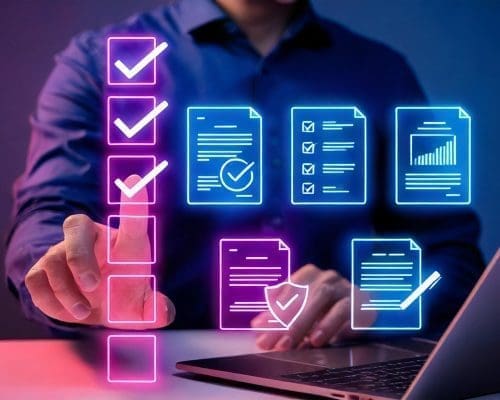Resources
Keeping you up to date with the latest advances in the industry, product releases, case studies and more
Filter by
Resource Type
Topic
Industry

Envisioning an Agentic AI Future for Communications
Discover how agentic AI is transforming communications — from networks and contact centers to how customers engage with businesses.

Content Guru Celebrates UK Contact Centre Excellence at the 30th Annual UK National Contact Centre Awards
Content Guru proudly joined more than 1,200 industry professionals to celebrate the UK’s top customer contact talent at the 30th Annual UK National Contact Centre Awards.

Content Guru scores 100% ‘Willingness to Recommend’ rating in the 2025 Gartner® CCaaS Voice of the Customer Report
Content Guru has received the highest overall ‘Willingness to Recommend’ rating, with 100% of customers that left a review saying they would recommend its storm® CX platform, in the 2025 Gartner® CCaaS Voice of the Customer Report.

2025 Gartner Voice of the Customer for CCaaS
Content Guru has received the highest overall ‘Willingness to Recommend’ rating, with 100% of customers that left a review saying they would recommend its storm® CX platform, in the 2025 Gartner® CCaaS Voice of the Customer Report.

AI Provides Measurable Cost Savings and Positive Impact on CSAT, Despite Employee Hesitancy
Content Guru and Together have been awarded “Best Use of AI & Automation” at the CCA Global Excellence Awards 2025.

To Achieve AI Success, You Need to Demonstrate Strong AI ROI
To make your AI transformation a success, leaders need to be able to demonstrate strong AI ROI. We’re arguably in Gartner’s ‘trough of disillusionment’. Without measurable AI ROI, it can be challenging to justify AI investments to stakeholders and customers.

The Rebirth of Retail: How Omni-Channel Retail is Transforming the way we Shop
In the era of E-commerce, creating memorable customer experiences is the single most effective way of differentiating your brand

Serco
Serco employees 50,000 people across 35 countries, with a revenue of over $7 billion. It provides business process outsourcing.

Content Guru and Together Win “Best Use of AI & Automation” at 2025 CCA Global Excellence Awards
Content Guru and Together have been awarded “Best Use of AI & Automation” at the CCA Global Excellence Awards 2025.

Three Agentic AI Workflows You Can Implement Right Now
As AI makes its mark on the contact center, a new term has emerged to describe the impact automation is having on Customer Experience (CX); Agentic AI.

AI-Powered Agents Help Humans Help Humans
You might think that the general public, including your customers, is chomping at the bit to have their issues resolved by a shiny, new, fully automated AI contact center. The reality, of course, is not so positive.

Unified AI Experience: The AI Customer Engagement Hub
If you deliver an outstanding experience, you’ll keep your customers coming back for more. Creating outstanding customer engagement should be a strategic priority for your business.